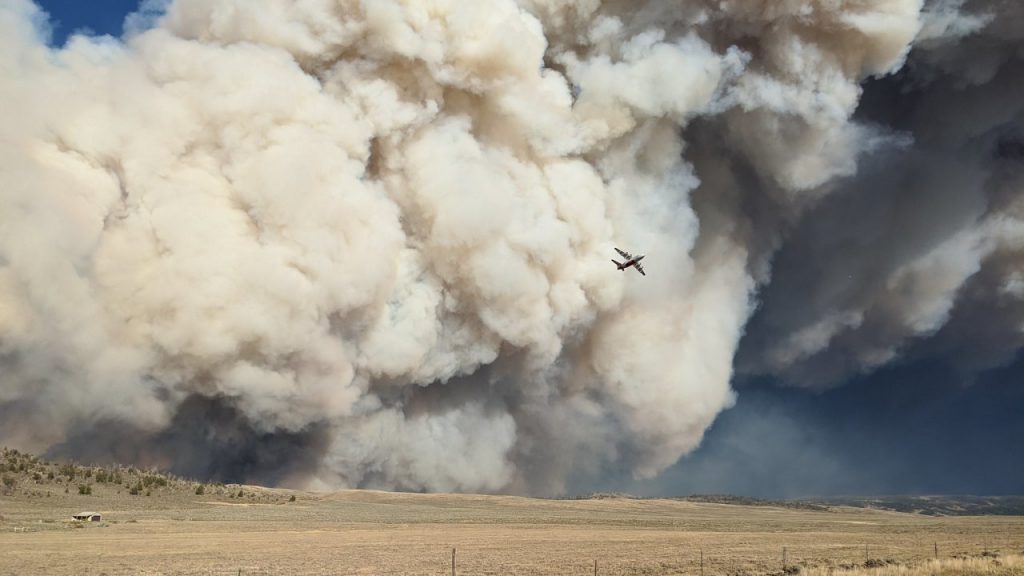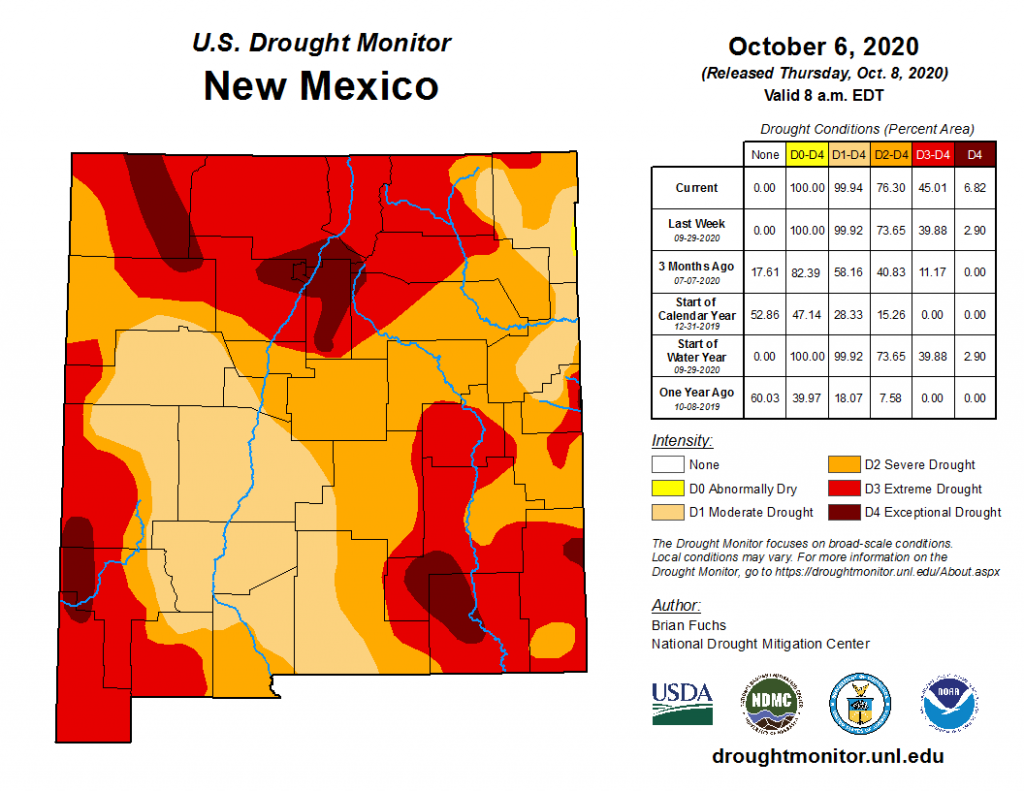By Manuel Romero / NM News Port
In recent weeks, New Mexico has seen hazy skies from ongoing wildfires in neighboring states. Experts say they’re concerned this could become the new normal.
While it has had a relatively calm fire season in New Mexico, it’s been a very active season in the greater western United States. That’s a troubling trend to meteorologist Andrew Church of the U.S. Weather Bureau.
“This season has been one of the most extraordinary ever,” Church said. “There has been over 6 million acres burned in the western United States, with over 4 million acres burned over the last 6 months.”
In early October, New Mexico was experiencing the effects of two persistent wildfires: the Mullen fire in southeast Wyoming and the East Fork fire in northeast Utah. Church says those fires were responsible for the smoke and hazy conditions affecting a large portion of northern New Mexico.

“Since the atmosphere is more stable (due to warm temperatures), the smoke is staying closer to the ground,” Church said.
Church said this has been one of the most intense fire seasons he has ever seen.
While there is no definitive explanation as to why this fire season has been so intense, Matthew Hurteau, a professor of the department of biology at the University of New Mexico, said New Mexico is currently under extremely dry conditions that can lead to wildfires — which is rare at this time of year.
“The National Weather Service released a critical fire weather warning across much of New Mexico and that has to do to the higher temperatures, windy conditions and the humidity was low,” Hurteau said. “That’s really unusual for October in New Mexico.”
“It’s a combination of higher temperatures, but also the fact that we didn’t have a good monsoon this year, the vegetation is real dry and real flammable,” Hurteau said.
Hurteau foresees a future where New Mexico is most likely going to experience prolonged fire seasons.
“Basically what we’re seeing here in New Mexico with increased climate change and increased warming is the fire season is extending in length,” Hureteau said. “These last few weeks are a great example because the vegetation should be too wet after monsoon season for us to have this much fire risk this time of year.”
In addition to warming temperatures, Hurteau also said New Mexico’s shrinking annual mountain snowpack will be a major factor in determining how long and intense the state’s fire seasons could be going forward.
“If we have a good snowpack, there’s enough moisture in the system that makes (the vegetation) less flammable and can get us through the monsoon season,” Hurteau said.
Hurteau also mentioned that the ongoing climate crisis will play a significant role in NM’s wildfire outlook.
“We have some real exposure risk here In New Mexico to the changing climate,” Hurteau said. “One is wildfire which is going to become increasingly common as the temperature goes up, but there’s also water availability… and the same high temperatures pose risk to us and the environment.”

Hurteau also mentioned some things New Mexicans can do to manage wildfire risks such as to do prescribed burns to clear dry brush.
Hurteau said that New Mexicans can do their part (recycling, carpooling/reducing harmful emissions, etc.) but lamented that “it’s a much bigger problem than what we can do about it here in New Mexico alone. It’s about reducing the emission of greenhouse gases….we contribute to that but we’re a small part of the population here in the U.S.”
Hurteau added that New Mexico could also go a long way in reducing climate change by creating a methane budget, which would help significantly reduce methane emissions into the atmosphere.
“In New Mexico, one thing we could do is address the amount of methane that escapes into the atmosphere from the oil and gas wells,” Hurteau said. “Methane is about 20 times more potent than carbon dioxide in terms of trapping energy and heating the atmosphere. Through regulation, we could substantially reduce or bring to zero the amount of methane going into the atmosphere…that would be a big deal.”
Hurteau recommended that anyone who was interested in seeing how the western region of the United States is doing in regards to climate change should look at the most recent climate assessment.
Manuel Romero is a journalism student and reporter for New Mexico News Port. He can be reached on Twitter @mannyboy92phx.